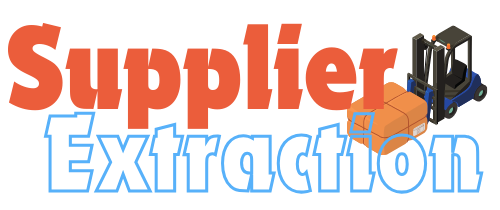Section 7: Quality Control and Inspection Tips for Chinese Products
Ensuring the quality of products sourced from China is paramount to maintaining your brand’s reputation and customer satisfaction. Implementing robust quality control measures and thorough inspections can help you avoid costly mistakes and ensure that the products meet your standards. This section provides detailed tips and strategies for quality control and inspection when sourcing from China.
Pre-Shipment Inspections: Catching Issues Early
Why Pre-Shipment Inspections Matter
Pre-shipment inspections are crucial for verifying that products meet your specifications before they leave the supplier’s facility. These inspections help identify and address issues early, preventing defective products from reaching your customers.
Steps for Conducting Pre-Shipment Inspections
- Choosing an Inspection Company:
- Reputable Firms: Select a reputable third-party inspection company, such as SGS, Bureau Veritas, or Intertek. These companies have the expertise and resources to conduct thorough inspections.
- Experience and Expertise: Ensure the inspection firm has experience with your specific product type. Different products have different inspection requirements.
- Developing an Inspection Checklist:
- Detailed Specifications: Create a detailed checklist that includes all product specifications, quality standards, and packaging requirements.
- Visual and Functional Checks: Include both visual inspections and functional tests. For example, check for cosmetic defects and verify that electronic products operate correctly.
- Scheduling and Execution:
- Timely Scheduling: Schedule the inspection close to the shipment date to ensure the products are ready and accurately represented.
- On-Site Inspection: Have inspectors visit the supplier’s facility to conduct the checks. Ensure they follow the checklist meticulously.
Thing to Do:
Before your next shipment, hire a reputable inspection company like SGS or Intertek. Develop a comprehensive checklist detailing your product specifications and quality standards. Schedule the inspection close to the shipment date and ensure the inspectors follow the checklist rigorously.
During Production Inspections: Monitoring Quality Throughout
Why During Production Inspections Are Important
During production inspections (DPI) allow you to monitor the manufacturing process and catch issues as they arise. This proactive approach can prevent large-scale defects and ensure consistent quality.
How to Conduct During Production Inspections
- Regular Audits:
- Scheduled Visits: Schedule regular visits to the supplier’s facility during different stages of production. This helps ensure adherence to quality standards throughout the manufacturing process.
- Unannounced Visits: Occasionally, conduct unannounced visits to keep the supplier vigilant and maintain consistent quality.
- Random Sampling:
- Random Inspections: Randomly select samples from the production line for inspection. This method helps provide an accurate representation of the overall product quality.
- Critical Tests: Perform critical tests on the samples to check for functionality, durability, and compliance with specifications.
- Documentation and Reporting:
- Detailed Reports: Require detailed inspection reports that include findings, photos, and any identified issues.
- Immediate Action: Address any issues immediately with the supplier to correct them before production continues.
Thing to Do:
Implement a schedule for regular and unannounced visits to your supplier’s facility during production. Conduct random sampling and perform critical tests on the samples. Ensure that detailed reports are provided and address any issues promptly with the supplier.
Post-Production Inspections: Final Quality Assurance
The Role of Post-Production Inspections
Post-production inspections are the final check to ensure that all products meet your standards before they are shipped. This step is crucial for maintaining quality and customer satisfaction.
Conducting Effective Post-Production Inspections
- Final Quality Checks:
- Comprehensive Review: Conduct a thorough inspection of the finished products, including visual and functional tests.
- Batch Testing: Perform batch testing, especially for large orders, to ensure consistent quality across all units.
- Packaging Inspection:
- Packaging Standards: Verify that the packaging meets your specifications for protection and presentation. Check for adequate labeling, barcodes, and any required certifications.
- Durability Tests: Conduct tests to ensure that the packaging can withstand shipping conditions and protect the product adequately.
- Documentation and Approval:
- Inspection Reports: Obtain detailed inspection reports that document the findings and any corrective actions taken.
- Shipment Approval: Only approve the shipment once the final inspection confirms that the products meet all quality standards.
Thing to Do:
Before approving a shipment, conduct a thorough final inspection of the finished products and packaging. Ensure all findings are documented in detailed inspection reports. Only approve the shipment if the final inspection confirms that all quality standards are met.
Building a Quality Control System: Long-Term Strategies
Why a Quality Control System Is Essential
A robust quality control system helps maintain consistent product quality and reduces the risk of defects. It involves setting up processes and protocols that ensure continuous monitoring and improvement of quality.
Steps to Build an Effective Quality Control System
- Setting Quality Standards:
- Clear Specifications: Define clear and detailed quality specifications for each product. These should be communicated to the supplier and included in all contracts.
- Compliance Requirements: Ensure that all products comply with relevant regulations and standards, such as CE, FCC, and RoHS.
- Training and Development:
- Supplier Training: Provide training for your suppliers on your quality standards and inspection processes. This helps them understand your expectations and improve their processes.
- Continuous Improvement: Encourage a culture of continuous improvement. Work with suppliers to identify areas for improvement and implement best practices.
- Regular Audits and Reviews:
- Performance Audits: Conduct regular performance audits to assess the supplier’s adherence to quality standards. Use the findings to provide feedback and drive improvements.
- Review Meetings: Hold regular review meetings with suppliers to discuss quality performance, address issues, and plan for future improvements.
Thing to Do:
Develop a comprehensive quality control system by setting clear quality standards and compliance requirements. Provide training for your suppliers and encourage continuous improvement. Conduct regular performance audits and hold review meetings to ensure ongoing adherence to quality standards.
Conclusion
Ensuring product quality when sourcing from China involves implementing thorough inspection processes at every stage of production, from pre-shipment to post-production. By working with reputable inspection companies, conducting regular and unannounced inspections, and building a robust quality control system, you can maintain high standards and deliver quality products to your customers.
Incorporating these quality control and inspection strategies will help you avoid costly mistakes, enhance customer satisfaction, and build a reputation for reliability and excellence. These efforts will contribute significantly to the success and sustainability of your sourcing operations in China.

